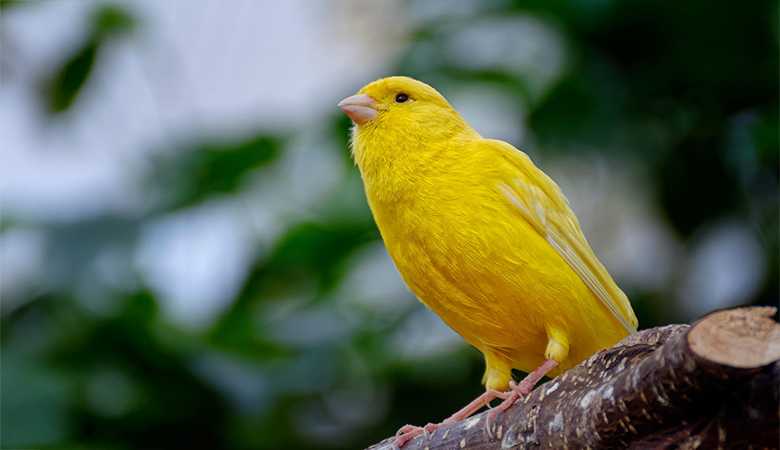Care and housing for the canary
Proper care and a spacious aviary, furnished according to the canary’s needs, are essential for its well-being. It thrives best in an environment that offers movement, light and the opportunity for social interaction.
Cage and space
Canaries need plenty of room to fly. Choose a wide cage rather than a tall one so the bird can make short flights rather than just climb. The minimum size for one canary is about 80 cm wide, 40 cm deep and 50 cm high, but larger is always better, especially if you keep multiple birds together. Place the cage in a bright, draft-free location, preferably not in direct sunlight or next to a heater. Provide enough daylight, as canaries are diurnal. In winter you may use artificial lighting with a bird lamp to extend daylight hours.
Interior
Provide several perches at different heights and with varied thicknesses, preferably made of natural wood. This exercises the feet and helps prevent calluses and long nails. Place bowls and feeders in a clean and accessible spot and hang a bath that the canary can use daily. This helps keep its feathers clean and in good condition. A grit tray and mineral stone should not be missing, as they supply calcium and support digestion. A well-furnished environment prevents boredom and provides both activity and rest.
Care
Keep the cage clean: remove waste, empty seed hulls and droppings daily. Clean the entire cage, perches and bowls at least once a week using warm water and mild soap. Fresh drinking water must be provided daily.
During moulting and breeding, your canary needs additional nutrients, such as proteins and vitamins. Proper support in these periods is important. Check the nails and beak regularly. If they become too long, have them trimmed by a veterinarian.







